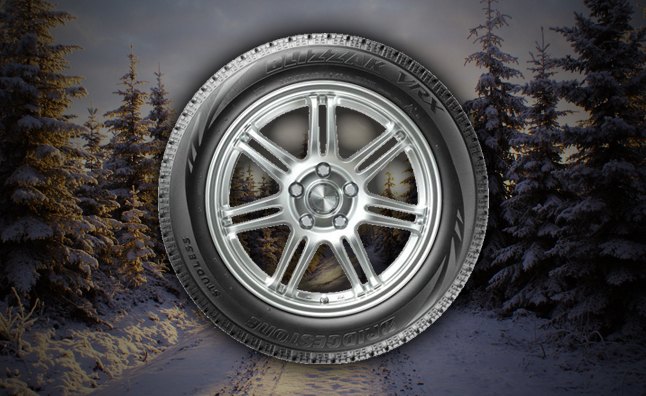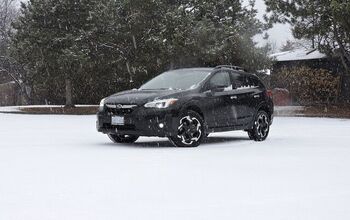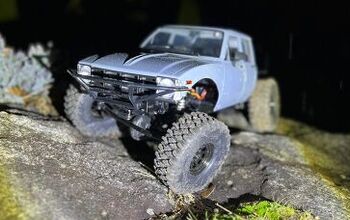How Do Winter Tires Work?

If polar bears and penguins lived in Detroit, they’d probably hitch a ride to the North Pole in order to warm up; Motown’s been that chilly. And if they opted to make the journey by car they’d almost certainly need snow tires to maximize traction and safety. But what separates these “shoes” from summer rubber or all-season tires? Quite a bit, actually.
Directly comparing winter and summer tires reveals some obvious variation between the two, though there are major disparities that are not apparent to the eye. “The physical appearance is different” Gandhi said, adding that with winter rubber “there’s quite a bit more siping.”
Sipes are small grooves that are cut or molded into the tread of a tire. Winter tires typically have a lot more of these than summer tires because they help “create more biting edges,” which promotes traction Gandhi said. In layman’s terms, winter tires generally look knobbier and more aggressive.
TRACTION IS MORE THAN TREAD DEEP
But the key to cold-weather grip goes far beyond big chunks of tread; tires are highly engineered pieces of technology backed up by cutting-edge chemistry.
“The main difference is the compound; the materials a tire’s tread is made out of,” Gandhi said. “The chemistry behind the rubber compounds is just amazing.” Bridgestone uses all kinds of different polymers in its winter tires.
SEE ALSO: Should You Put Nitrogen in Your Car’s Tires?
He said summer tires become stiff and hard in cold temperatures, which is an attribute that reduces their ability to grip the road when the thermometer drops. On the other hand, he said winter tires are typically made of materials that remain more pliable at frigid temperatures.
That malleability is critical. The tread of a tire needs to conform to the road’s surface in order to provide maximum grip.
Beyond aggressive tread patterns and squishy rubber, even more advanced engineering goes into winter tires. For instance Gandhi said “Silica is used to improve wet grip.”
SEE ALSO: Color-Changing Tires Warn of Winter Weather
All of this cutting-edge science has one goal in mind: safety. “You’re going to be able to accelerate much quicker [with winter tires], and more importantly, you’re going to be able to stop,” Gandhi said. Additionally, drivers will have better handling and more confidence as they navigate snow or ice-covered roads.
POTENTIAL TRADE-OFFS
Winter tires provide a tremendous boost in cold-weather traction compared to either summer or all-season rubber, but they’re not perfect. Gandhi pointed out that one potential downside is ride quality. He said consumers may notice that their vehicles may not feel as crisp as they would with either summer or all-season tires.
Though there are countless variables he also said that some folks have found their snow tires to be quieter than comparable all season-tires; this could be attributable to the softer rubber compound they’re made from. With extra siping and a more aggressive tread pattern, you’d think they’d make a lot more noise but that’s not necessarily the case.
When it comes to dollars and cents, snow tires are “about comparable to a normal set of premium tires” said Gandhi, noting that Bridgestone is considered a premium tire-manufacturer. Crunching some numbers, he added that to own a dedicated set of winter rubber is “less than the price of latte, about $1.47 a day.”
As for longevity Gandhi noted that for an average motorist traveling anywhere between 10,000 and 12,000 miles annually “Typically winter tires last three to four seasons,” though once again there are many variables that come into play. If you drive aggressively, routinely haul heavy loads or tow a trailer that lifespan could be dramatically shorter.
WHEN TO INSTALL WINTER TIRES
So, you’ve invested in a set of quality winter tires, when is it appropriate to install them? “It’s going to vary by the region” Gandhi said but he noted that a good rule of thumb is to put them on when you start to see your breath.
Technically there’s nothing wrong with running winter tires in the summer though it’s not ideal. Gandhi said “The only thing that could happen is that you’re going to wear your winter tires away quicker.” This is because of much higher road temperatures. Have you ever touched asphalt at midday in July? I don’t recommend it.
TO BUY OR NOT TO BUY, THAT IS THE QUESTION
There are plenty of good reasons to pony-up the cash and purchase a set of dedicated winter tires, especially if you live in an area that routinely experiences cold temperatures as well as snowy and icy weather. Not only do they provide you with more confident handling but they also allow you to accelerate more easily and stop in shorter distances compared to the performance provided by summer or all-season tires.
But in reality what all of those benefits boil down to is safety. Do yourself and your fellow motorists a favor and put a set of winter tires on your vehicle, you won’t regret it.
If you’re ready to buy a new set, click over to AutoGuide.com’s tire reviews for advice.

Born and raised in metro Detroit, Craig was steeped in mechanics from childhood. He feels as much at home with a wrench or welding gun in his hand as he does behind the wheel or in front of a camera. Putting his Bachelor's Degree in Journalism to good use, he's always pumping out videos, reviews, and features for AutoGuide.com. When the workday is over, he can be found out driving his fully restored 1936 Ford V8 sedan. Craig has covered the automotive industry full time for more than 10 years and is a member of the Automotive Press Association (APA) and Midwest Automotive Media Association (MAMA).
More by Craig Cole




































Comments
Join the conversation
Uh, penguins don't live at the North Pole.